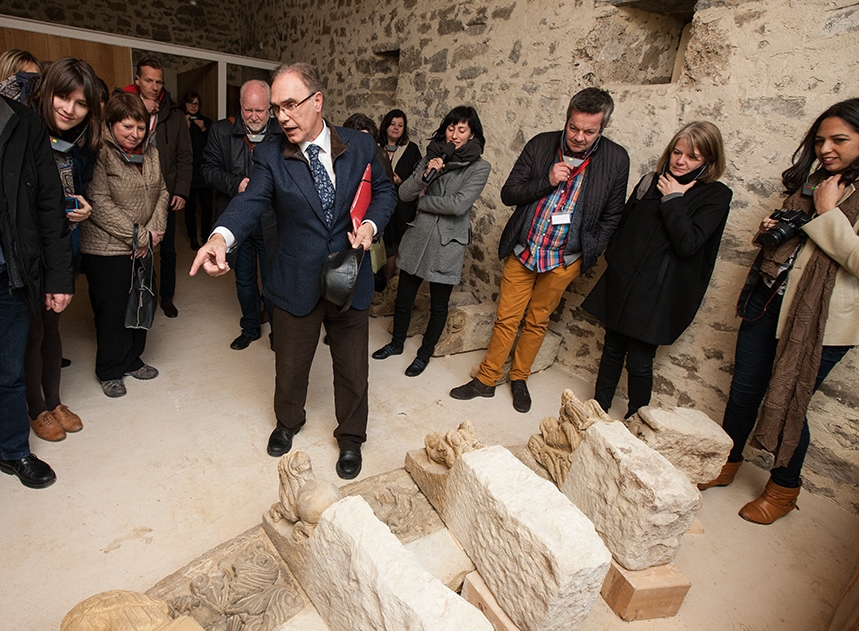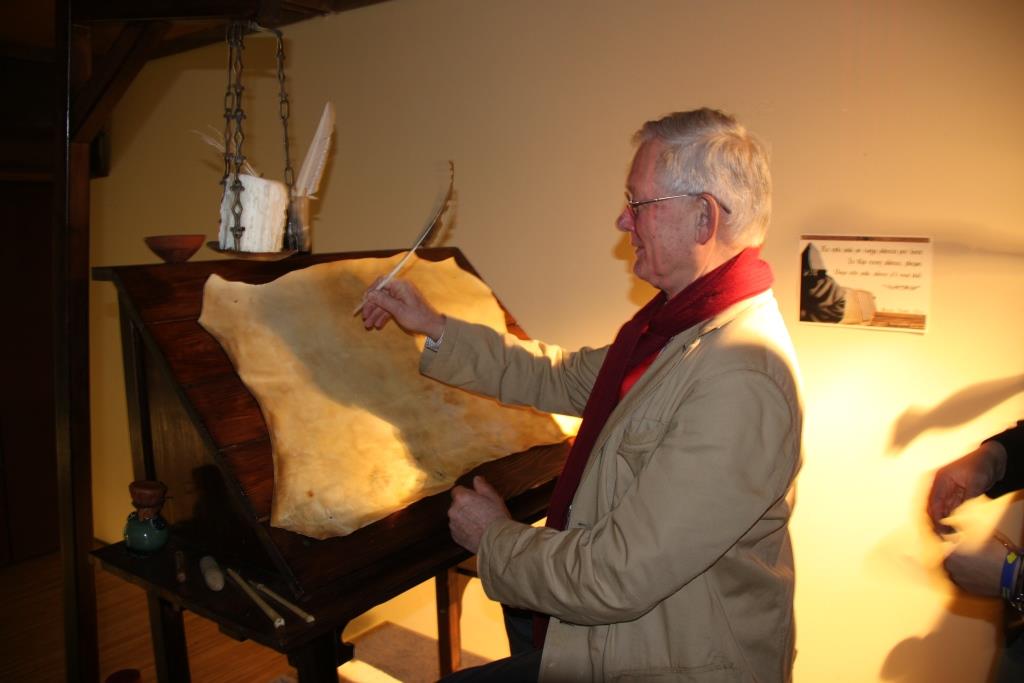The penultimate meeting of ALTERheritage project, funded by the European Leonardo Program took place in Potes (Spain) from 19 to 22 March 2015.
by Pilar G. Bahamonde*

This occasion gave us, the Sociedad Regional de Educación, Cultura y Deporte of Government of Cantabria, the possibility to welcome 25 experts on religious heritage from across Europe to an international conference and work together in situ.
The place we chose was none other than an example of a reused religious building in the heart of the Picos de Europa mountains, the old church of San Vicente (14th century), in Potes, Cantabria, the North of Spain.
This late gothic humble church, whose existence is first documented in
year 952, was appointed BIC (national highest Spanish level of protection) in the year 2000.
Nowadays, this religious building is considered a jewel of the local architecture.
After the restoration, it opened its doors as Centro de Estudios Lebaniegos to offer the inhabitants of Liébana a space for art and culture. It also offered them an integrating and inclusive meeting place to feel further attached.
It is the only Pilgrim´s Office in all Cantabria due its unique location in the pilgrimage Camino Lebaniego de Santo Toribio. Visitors and pilgrims are able to enjoy and benefit from all the information and activities about the History of this Spanish and European region.
Most noted is the existence of the Monastery of Santo Toribio de Liébana, one of the only 4 mediaeval Holy Places of Jubilee Pilgrimage of all Christianity, along with Jerusalem, Rome and Santiago de Compostela. Inside the monastery, the Lignum Crucis, (largest preserved piece of the Cross where Jesus died), at the origin of this Camino, along with the figure of the abbot Beato de Liébana and his contribution to defend Christianity and to promote Saint James as patron saint of Hispania in the 8th century.
As a result of the ALTERheritage conference and of the press releases and the opinions that followed it, we experience today a rising awareness in our region of public opinion and by all the stakeholders on the safeguarding of our religious heritage.
The meeting was an eccellent opportunity to discuss the intention to include the Camino Lebaniego de Santo Toribio (part of the North Way of Saint James of Compostela) in the Religiana Project. Both of these ways are appointed by ICOMOS as suitable to be listed World Heritage by UNESCO.
During the ALTERheritage Conference all the delegates understood and experienced the task an old church carries on its shoulders. Raising local and regional awareness serves at the same time to protect our national and European heritage as well.
When we refer to European Intangible Heritage, we think on a global scale, and we are right. But we also have to think about the richness of local humble heritage as well. Because, without any doubt, we can affirm Europe is made of all wonderful sorts of local heritages, which altogether help to build the concept of European entity in itself.
Olivier de Rohan Chabot, president of FRH, made a statement during this conference which was accepted by all as a genuine and pristine point of view, I quote “Religious Heritage is the biggest museum in Europe and it is a responsibility of everyone to care for it”. Undoubtedly, it is a task for every citizen to assimilate and be aware that it matters, therefore to raise awareness to preserve it”.

The SRECD of the Government of Cantabria understands that religious architecture also contributes as a physical marker, as a reminder of all heritage involved in the history of Europe. Medieval Europe’s historical events help us to understand our roots, explain and justify what we are today and will be tomorrow.
The presence of all the delegates in Cantabria, FRH and all the work done during ALTERheritage project puts our heritage on the map again and in our minds; this is our contribution.
Intangible heritage helps Europeans to understand another piece of Europe´s History.
And so, we all brought to light the Europe when Charlemagne was emperor.
A time when Alcuin of York in Saint Martin the Tours was receiving monks bringing news from the mountains of Picos de Europa. He shared with his friend, Beato of Liébana, letters of faith and worries about the future of the Christian Europe of their time, as easily as he was consulted in Canterbury for the ceremony of Aethelbert as archbishop.
A time when Beato was appointing Santiago as Patron Saint, “ Tutorque nobis et patronus vernulus” and assessing Alcuin with the interpretation of the Deeds; when the Bishop of Iria Flavia called for the Spanish king, Alfonso II, to see with his own eyes the discovery of the tomb of the Apostle.
When in Iona, or Lindisfarne the Columban monks were producing the Book of Kells and when the Cronica Albendense was writing for the first time in Europe the Arabic numbers as we know them today…
This is undoubtedly part of Europe´s precious Intangible Heritage. We all, members of ALTERheritage project, have helped to safeguard it today in the same place this two friends, Alcuin and Beato, did 1.300 years ago. We do not need to be monks today, just conscious citizens with a clear opinion on our vast and diverse religious heritage, the vulnerability of its art, culture, its essence; and the necessity to pass it through to the future generations to come…
“Sis memor Alcuini per…verba Beate
Per colles, montes currat haec cartula celsos
Ut ferat ex region (ne vobis) patri verba salutis.”
“Remember Alcuin by these words, Beato
May this letter cross the hills and high mountains,
To take these words of greetings to the father from so far (from you).”
Letter from Alcuin of York to Beato de Liébana
Saint Martin de Tours, Spring, year 799
* Pilar G. Bahamonde is the director of the Centro de Estudios Lebaniegos in Potes, Cantabria. She also member of FRH





Follow us: